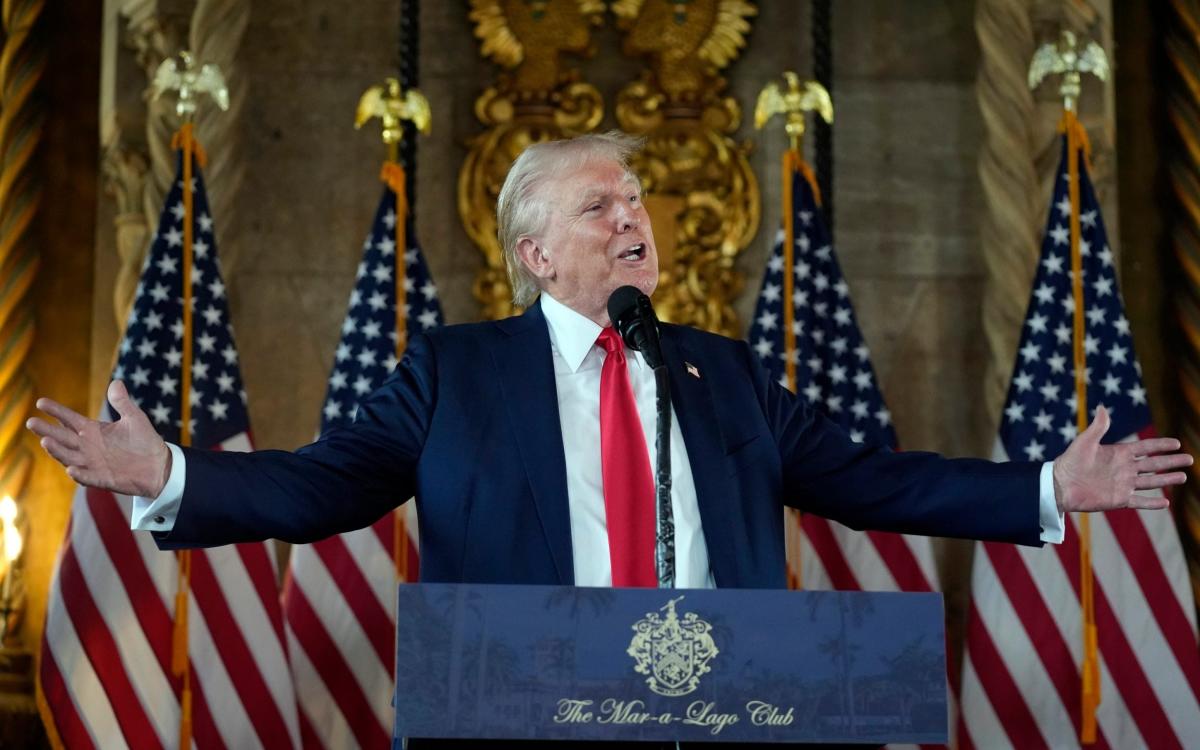Trump: President should set interest rates


Donald Trump has suggested the US president should have a say over interest rates, in a move which breaks with recent orthodoxy that monetary policy should be set independently.
“I feel the president should have at least (a) say in there,” said the Republican candidate.
Mr Trump appeared to draw on his experience as a real estate investor to back a claim that he should set interest rates, should he win November’s election.
“I think that in my case, I made a lot of money, I was very successful, and I think I have a better instinct than in many cases, people that would be on the Federal Reserve or the chairman,” he told reporters at his Mar-a-Lago property in Florida.
When he was president from 2017 to 2021, Mr Trump appointed Jerome Powell as chairman of the Fed, after declining to give Janet Yellen a second term at the head of the central bank.
Ms Yellen is now Treasury secretary for President Joe Biden.
The theory among economists is that politicians face short-term pressures which could lead them to cut interest rates before elections, boosting the economy for political gain at the risk of letting inflation run riot later.
By contrast the hope is that technocratic central bankers, appointed by politicians but allowed to make interest rate decisions independently, should have a better chance of setting borrowing costs for the long-term good of the economy. This includes making unpopular decisions such as raising interest rates to crush inflation.
In the UK, this became official policy when Gordon Brown, as Chancellor, granted the Bank of England operational independence, establishing the Monetary Policy Committee to set rates.
Last week Mr Trump promised that if he wins the election he would lower inflation and interest rates.
In April it was reported that the Republican candidate’s aides had drawn up plans to eject Mr Powell and allow Mr Trump to set rates himself.
The Federal Funds Rate is currently 5.5pc.
Mr Powell and his colleagues last week held the rate again, declining to cut it to 5.25pc but hinting that lower rates could come in September.
Following weak economic data in the subsequent days, financial markets plunged and fears grew among traders that the Fed had made a mistake, potentially requiring an emergency rate cut before the next policy meeting.
Some of that panic has calmed on more recent numbers showing a fall in the number of Americans newly signed on to claim unemployment benefits, assuaging fears of an impending recession.








